When putting out feeders for the birds, you also have to consider other critters showing up for a free meal. I lucked out for a while without anyone showing up other than the birds. We now have the occasional raccoon Procyon lotor, skunk family Mephitidae, eastern gray squirrel Sciurus Carolinensis, American red squirrel Tamiasciurus hudsonicus, eastern chipmunk Tamias striatus and northern flying squirrel Glaucomys sabrinus, showing up to the feeders. I now bring in the feeders at night and put them out again first thing in the morning. This practice seems to have helped with cutting down on these unwanted visitors, but we humans can’t control everything, especially nature. Here are a few shots of a visit from an eastern gray squirrel during our last snowstorm here in Maine. This little troublemaker stuck to the ground looking for fallen birdseed, but as always, proceeded to climb the fence for easy launching onto the bird feeders. We had a bit of a staring contest and with no luck on the squirrel’s part, it took off. I may have won this battle, but not the war. If you have any critter stories pertaining to your bird feeders that you would like to share, please feel free to leave them in the comment section below.
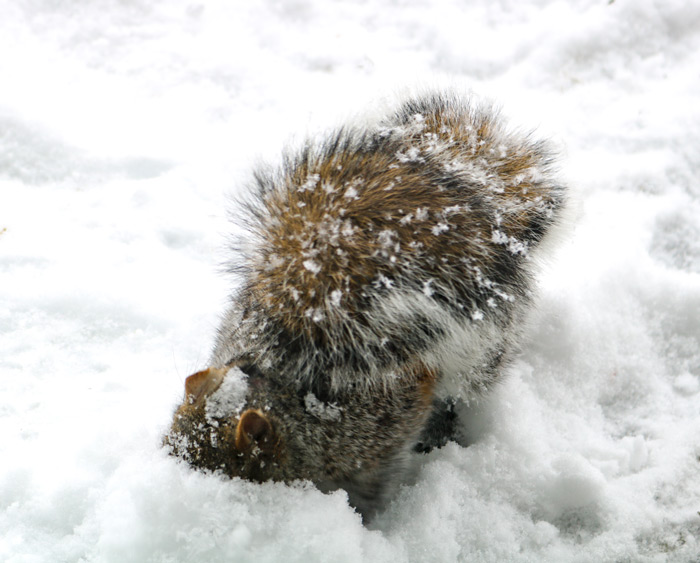
The eastern gray squirrel or gray squirrel is a tree squirrel belonging to the genus Scirus.
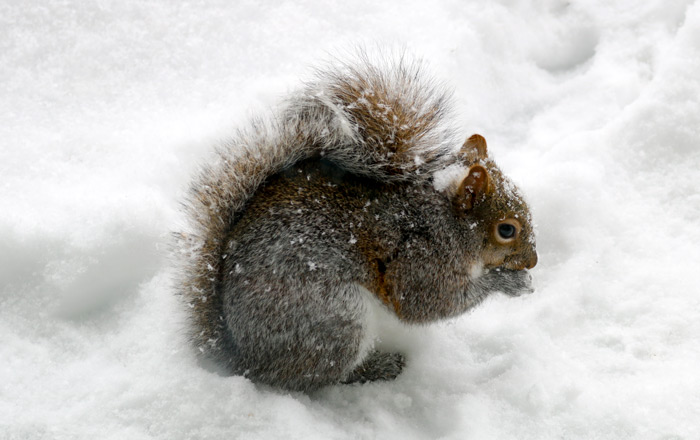
Eastern gray squirrels can be found in the eastern and midwestern United States and southern parts of the eastern provinces of Canada.
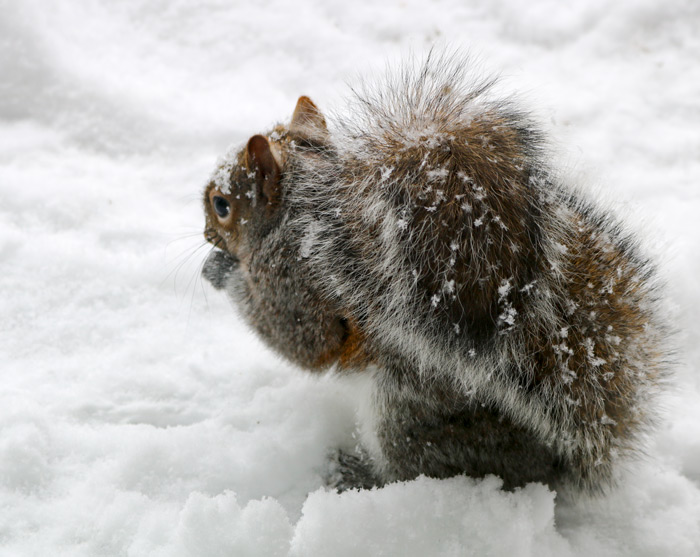
The eastern gray squirrel is the most widely distributed of the five North American members of the genus.
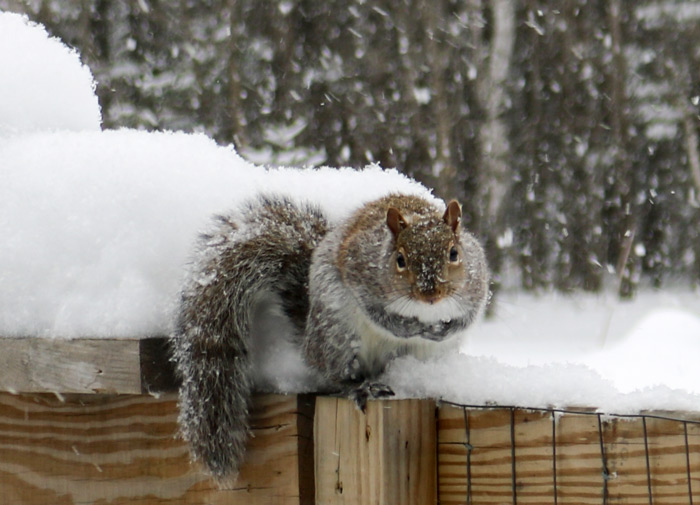
Sciurus, is derived from the two Greek words, skia, meaning shadow, and oura, meaning tail. The meaning of the name refers to the squirrel sitting in the shadow of its tail.
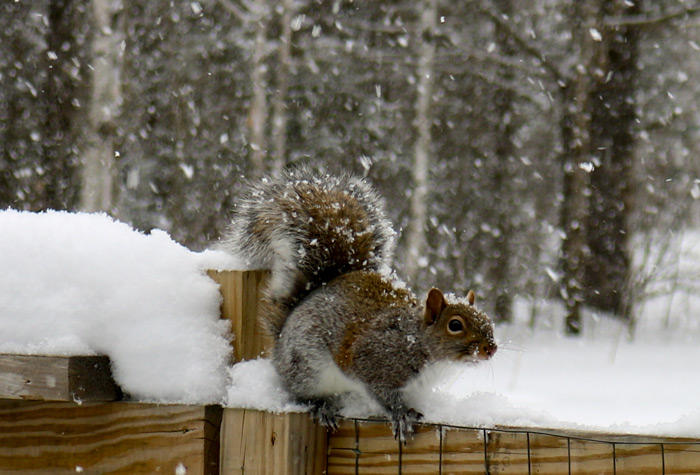
The eastern gray squirrel is a small mammal with gray or brownish fur on its back, white fur on its underside, and a large bushy tail.
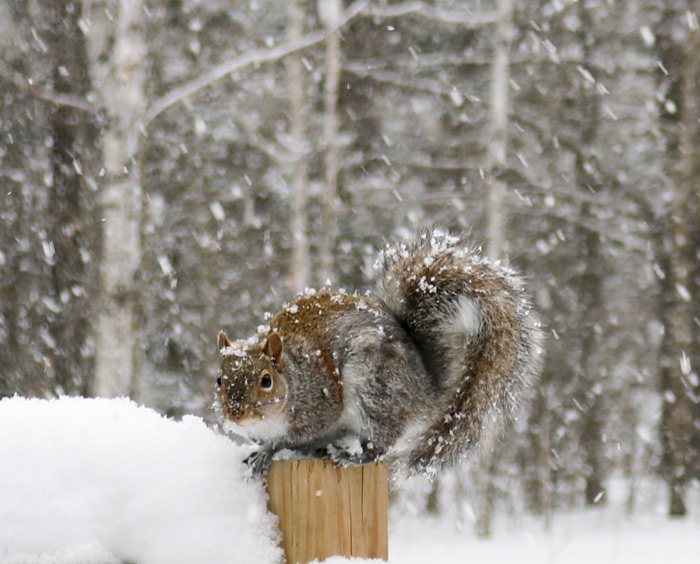
Eastern gray squirrels are most active during the day and can adapt to a wide variety of habitats. They will eat a range of foods depending on the availability of the season. Their diet includes tree bark, tree buds, berries, many types of seeds, acorns, walnuts, hickory nuts, beechnuts, butternut, and some types of fungi. Nuts are gathered singly and buried in the ground, usually somewhere near the source tree. They will use bird feeders to find their food during the winter.
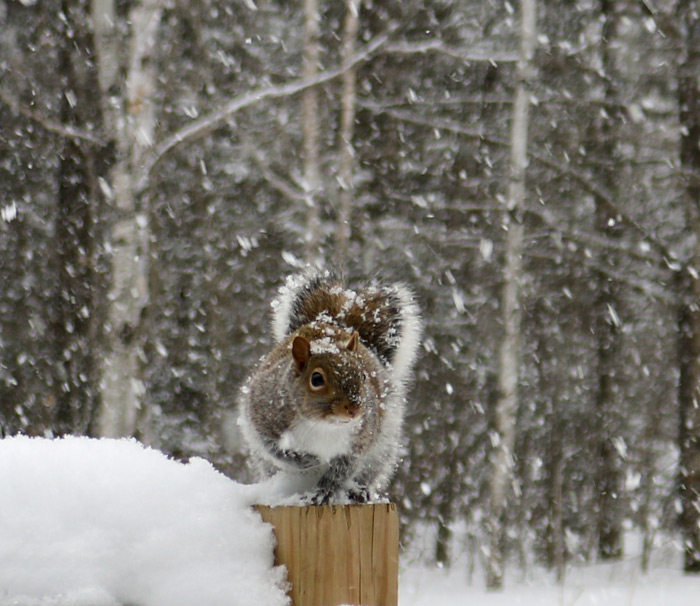
Eastern gray squirrels prefer constructing their dens in large tree branches and within the hollow trunks of trees. They will also take shelter within abandoned bird nests. The dens are usually lined with moss plants, thistledown, dried grass, and feathers. This helps provide insulation to the den and perhaps reduces heat loss. A cover for the den is usually built afterward.
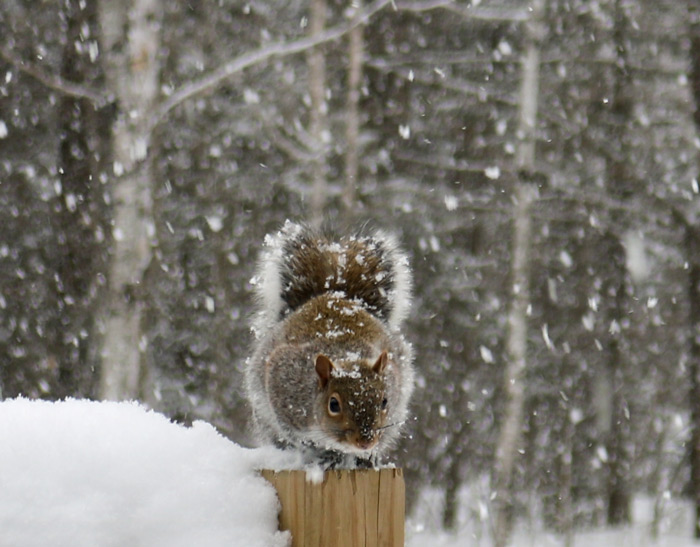
Eastern gray squirrels build nests that are called the drey or dray. These nests are constructed in the forks of trees. The drey is made up of dry leaves and twigs. They will also build their nest in the exterior walls of houses.
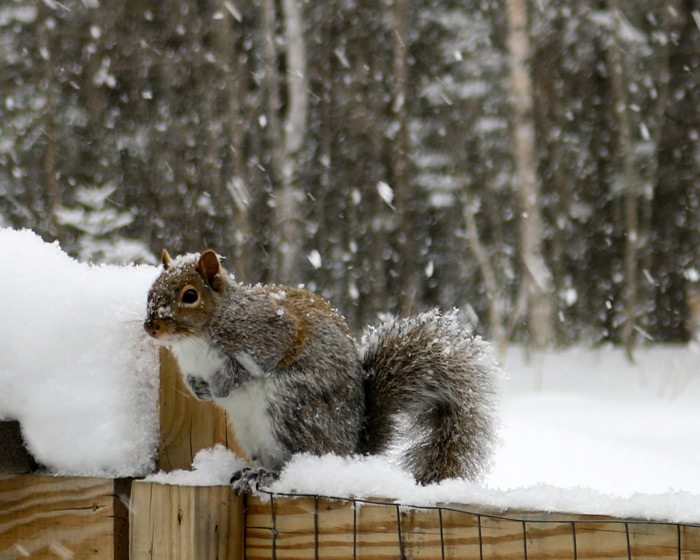
Breeding and mating can occur twice each year for eastern gray squirrels. One season starts from December to February and again from June to July. The gestation period is 45 days. The average litter size is three young, called kits or kittens. Females will defend their nests aggressively from other squirrels and predators while caring for their young.

The eastern gray squirrel has the ability to leap from tree to tree. They have sharp claws that aid them in grasping and climbing trees. They are also one of the few mammalian species that can descend a tree head-first. It does this by turning its feet so the claws of its hind paws are backward-pointing and can grip the tree bark easily.
These squirrels can live to be 20 years old in captivity, but in the wild, life expectancy is much shorter due to predation and habitat. At birth, their life expectancy is one to two years and adults typically can live to six years, with some exceptions making it to 12 years. Predators include the American mink Neovison vison, weasels Mustelida, red fox Vulpes vulpes, bobcats Lynx rufu, gray wolves Canis lupus, coyotes Canis latrans, lynx Lynx, and birds of prey, such as Red-tailed Hawks Buteo jamaicensis.
Leave a Reply